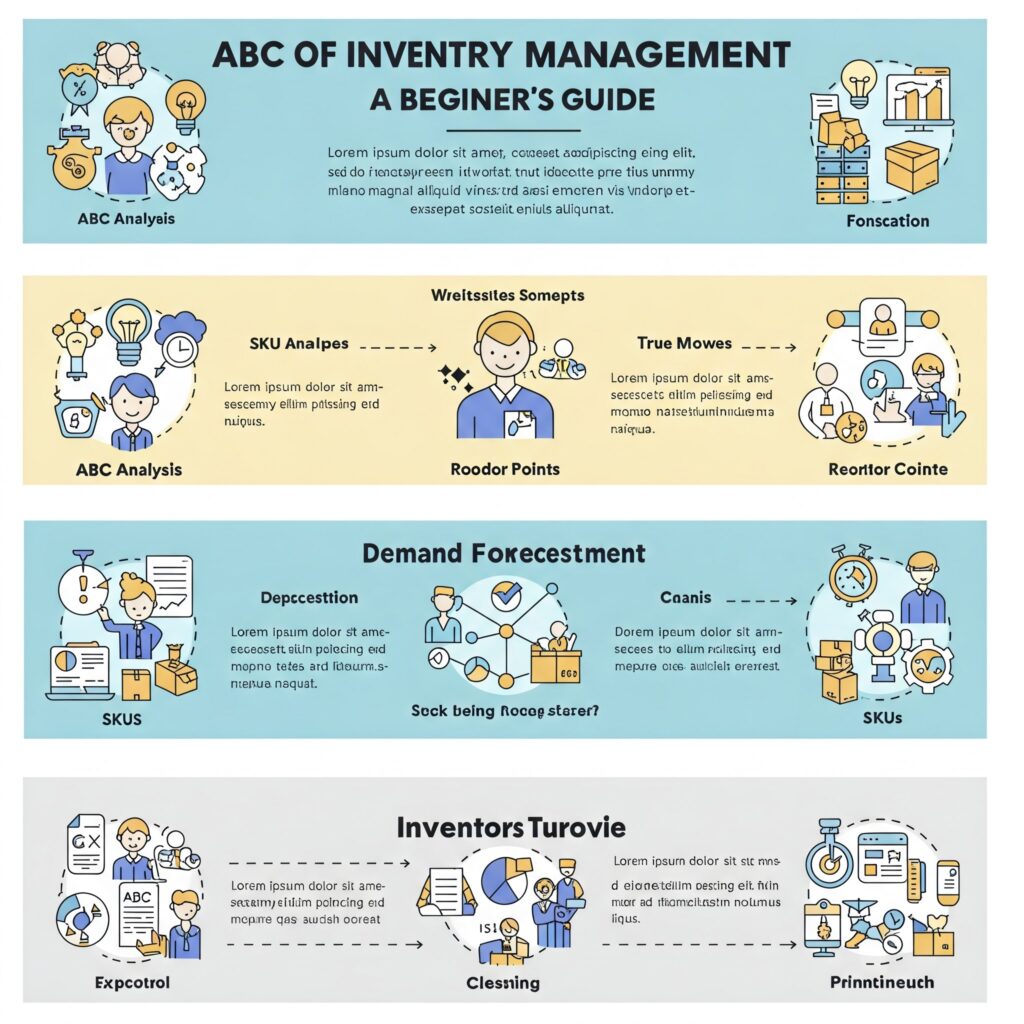Inventory management might sound complex, but at its core, it's about effectively tracking and managing
the goods your business buys, stores, and sells. Whether you're a small startup or a large enterprise, efficient inventory management is crucial for success.
This beginner's guide will break down the fundamental concepts:
1 - What is Inventory?
Simply put, inventory refers to the goods a business has on hand for sale. This can include:
- Raw materials: Used to produce finished goods.
- Work-in-progress: Goods that are still under production.
- Finished goods: Ready for sale to customers.
the goods your business buys, stores, and sells. Whether you're a small startup or a large enterprise, efficient inventory management is crucial for success.
This beginner's guide will break down the fundamental concepts:
1 - What is Inventory?
Simply put, inventory refers to the goods a business has on hand for sale. This can include:
- Raw materials: Used to produce finished goods.
- Work-in-progress: Goods that are still under production.
- Finished goods: Ready for sale to customers.

2 - Why is Inventory Management Important?
- Increased Sales: By ensuring you always have enough stock on hand, you can meet customer demand and avoid losing sales to competitors.
- Reduced Costs: Efficient inventory management helps minimize storage costs, prevent stockouts, and reduce the risk of spoilage or obsolescence.
- Improved Cash Flow: By optimizing inventory levels, you can free up capital that would otherwise be tied up in stock.
- Enhanced Customer Satisfaction: Meeting customer demands promptly and accurately leads to higher customer satisfaction and loyalty.
3 - Key Inventory Management Concepts:
- Stock Levels: Determining the optimal quantity of each item to keep in stock. This involves balancing the risk of stockouts with the costs of holding excess inventory.
- Demand Forecasting: Predicting future customer demand to ensure you have the right amount of stock available.
- Order Fulfillment: The process of receiving, processing, and fulfilling customer orders accurately and efficiently.
- Inventory Turnover: Measuring how quickly you sell and replace your inventory. A high turnover rate generally indicates efficient inventory management.
4 - Common Inventory Management Techniques:
- First-In, First-Out (FIFO): This method assumes that the oldest items in stock are sold first.
- Last-In, First-Out (LIFO): This method assumes that the newest items in stock are sold first.
- Just-In-Time (JIT): This approach minimizes inventory levels by ordering goods only when they are needed.
5 - Inventory Management Software
Inventory management software can significantly streamline your processes by:
- Tracking stock levels in real-time
- Generating purchase orders automatically
- Analyzing sales trends and predicting demand
- Providing valuable reports and insights
Getting Started
- Begin with a thorough inventory audit: Take stock of all your current inventory.
- Identify your key performance indicators (KPIs): Track metrics like inventory turnover, stockout rates, and order fulfillment times.
- Choose the right inventory management tools: Select software that meets your specific needs and budget.
- Continuously review and refine your processes: Regularly analyze your inventory data and make adjustments as needed.
- By understanding the fundamentals of inventory management and implementing effective strategies, you can improve your business efficiency, reduce costs, and increase profitability.
- Disclaimer: This is a general guide and may not be suitable for all businesses.
I hope this blog post provides a helpful overview of inventory management for beginners!